Here’s a look back at our 10 biggest stories covering the video game market this year.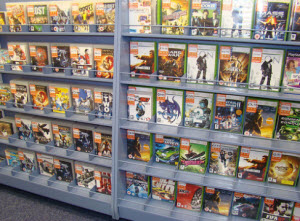
1. Video games aren’t recession proof.
At the beginning of 2009, it looked like the console video game industry was defying gravity. Sales in the first two months were up, according to market researcher NPD. Analysts believed that a “cocooning” effect would protect sales, as consumers would stay indoors more and not spend as much money going out. But in March, sales fell 16 percent compared to a year earlier. After that, it was pretty much downhill. Even in November, when everyone predicted price cuts and the launch of big titles would send the industry into a positive year-over-year comparison, sales still fell 7 percent. And that was despite the smashing success of Modern Warfare 2, the fastest-selling game in history. Sales on the Nintendo Wii and the Nintendo DS, which provided almost all of the growth in 2008, were disappointing.
The recession was certainly a drag on gamer purchases and 2008 was a particularly tough year to compete against. There were plenty of other possible contributing factors. Sales of used games have never been higher, thanks to their easy availability at GameStop stores and in online auctions. And online games showed considerable growth rates, both at free-to-play game web sites and on social networks such as Facebook. Yet the social game industry is still small in revenues compared to the $20 billion U.S. console industry. Year to date, U.S. game console sales are down 12 percent, and few are counting on December to turn things around much. The question now is whether games can recover in 2010 — particularly with big titles in the works such as Halo: Reach, BioShock 2, Max Payne 3, Starcraft II, Mass Effect 2, MAG, and World of Warcraft: Cataclysm — or if there is a fundamental shift going on as consumers spend more of their time with inexpensive online casual games and forego the more expensive games.
 2. Virtual goods take off in free-to-play online games.
2. Virtual goods take off in free-to-play online games.
Virtual goods revenues in free-to-play online games are expected to top $1 billion in the U.S. in 2009, according to Inside Network and Virtual Goods Summit. Before the recession hit in 2008, advertising was one of the big drivers of casual games. And you could try a casual game for an hour before you had to buy it for $19.99. But the recession killed advertising for a time and the $19.99 price point couldn’t hold up among the onslaught of free-to-play web games and 99 cent iPhone titles. Enter the virtual goods business model, where you can play a game for free and only have to pay a small amount to buy something such as a better weapon, a time-saving device, or decorative clothing that makes your character look unique. This model was popularized in South Korea and China, but it came to a U.S. with a vengeance in 2009 thanks to game web sites and Facebook games. By and large, 5 percent of 10 percent of the players will buy a virtual good. The rest of the players can often be monetized through ads. So the hybrid model will likely succeed going forward.
 3. Zynga raises $180 million in venture capital.
3. Zynga raises $180 million in venture capital.
This funding event affected just one company. But it suggested that Zynga had earned itself a multibillion-dollar valuation without ever selling a game. Zynga embraced the free-to-play, virtual goods business model early on in games such as Texas HoldEm Poker. It used that position to invest heavily in games as services, where the game is constantly updated to suit the demands of users. That created a virtuous cycle where new games took off faster and could be cross-promoted with the older games. Soon enough, Zynga was launching games such as Cafe World and FarmVille that got tens of millions of users in a matter of weeks, enabling Zynga to become the top app developer on the social network, which grew to 350 million users this year. It easily fended off rivals from the traditional game industry such as Electronic Arts and Ubisoft. The Russian investor Digital Sky Technologies, which also invested in Facebook, saw how important Zynga, with its 232 million monthly active users (AppData), was to the future of Facebook itself. Not even an offer scandal could hurt Zynga’s momentum.
 4. Electronic Arts buys Playfish for as much as $400 million
4. Electronic Arts buys Playfish for as much as $400 million
Electronic Arts tried to unseat the leaders of social gaming with its own titles, from Scrabble to Spore. But try as it might, it couldn’t beat them. Even EA’s No. 2 executive, John Pleasants, left to join social game firm Playdom as its CEO. So EA went after the No. 2 game publisher on Facebook, Playfish. Electronic Arts said it would lay off 1,500 employees on the same day it had bought Playfish for as much as $400 million. That said a lot about EA’s strategy to adapt to the changing landscape of games. In a way, it was the ultimate victory of the new game company — with its virtual goods model and fast, viral efficiency — over the traditional game company. Now the marriage of the two will let Playfish exploit EA’s brands, from the Sims to EA Sports titles on Facebook and beyond.
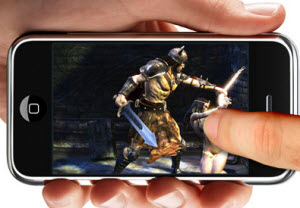 5. The rise of the iPhone/iPod Touch as Apple’s portable game platform
5. The rise of the iPhone/iPod Touch as Apple’s portable game platform
Apple’s rise as a gaming company gathered huge momentum in 2009. In an interview with the New York Times’ David Pogue, Apple chief executive Steve Jobs disclosed that the company is going after the portable games market in a big way with the iPhone and the iPod Touch. Two years ago, that would have been a funny joke. There are 117,561 apps in the AppStore, including 22,339 games, according to Mobclix. About 6,844 games are free, while 15,495 are paid. A year ago, there were only 1,500 games on the iPhone. Many of the paid apps are selling at 99 cents. That has likely contributed to slowing sales of Sony’s PlayStation Portable and Nintendo’s DS handheld game platforms. In a couple of years, Apple has sold nearly 60 million iPod Touches and iPhones. Sony’s PSP has sold about 54 million units and the DS and DSi have sold about 119 million. With its new in-app purchases, Apple has enabled free-to-play games, where you can play a game for free and pay for virtual goods. It’s conceivable that Apple could become the biggest portable game platform, almost by accident. One thing is for sure. Apple has lots of passionate developers. And any platform owner should know that whoever has the developers, as well as the users, will ultimately win the war.
 6. Call of Duty Modern Warfare 2 breaks all the records.
6. Call of Duty Modern Warfare 2 breaks all the records.
If you haven’t heard, this game for the consoles and PC sold more than $550 million worth of games in its first five days, beating out Grand Theft Auto IV from 2008. That helped GameStop beat sales estimates and led Microsoft to report its biggest day ever on Xbox Live, with more than 2 million concurrent players on the online gaming service. In the first five days, more than 8 million players logged on to play the game, prompting Activision Blizzard to announce that it had amassed the world’s biggest army. To date, overall Call of Duty franchise sales have topped $3 billion. There may be a blast crater around the game, since so many gamers continue to play multiplayer in lieu of buying other games. For those who think that consumers have moved on to free games, it’s worth remembering this game.
 7. Microsoft announces Natal, Sony creates the wand
7. Microsoft announces Natal, Sony creates the wand
The motion-sensing control system of the Nintendo Wii has inspired the industry to shift away from game controllers. The other console makers have postponed the introduction of new consoles because they will be giving their current generation of products a big mid-life boost. This spring, Sony will launch a wand that can be used to capture movements and control games in a precise fashion. Microsoft, meanwhile, is launching its ambitious Project Natal in the fall of 2010. With Natal, the console will recognize a player’s face, distinguish between multiple voices, and capture the movement’s of someone’s entire body and use the inputs as controls for a game. If these things work as advertised, they will take gaming to another level and give people a reason to continue buying $60 games even as the amount of free games out there multiplies by the day. Nintendo, not to be outdone, has some kind of heart sensor for games coming.
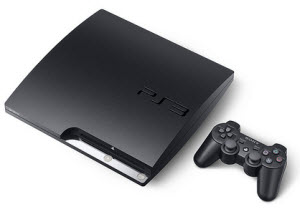 8. Sony launches PS 3 Slim, initiates console price cuts
8. Sony launches PS 3 Slim, initiates console price cuts
It took far too long for game console makers to realize their prices were too high and they were driving away audiences in this console generation. One of the problems was Sony, which had a high-priced PlayStation 3 and couldn’t slash prices without hurting the overall corporation. But the company finally redesigned the PS 3 to fit in a smaller box with revamped, lower-cost chips inside it. The company cut $100 off the price of its console and introduced the new PS 3 Slim in August, prompting Microsoft to shave $100 off the price of the Xbox 360. Even Nintendo cut $50 off the price of the Wii for the first time since 2006. Wal-Mart, meanwhile, has been cutting $10 off the price of $60 or $50 new games this season too. These steps are important in helping the consoles reach broader audiences, and they are even more important in light of the recession and the rise of so many free-to-play games.
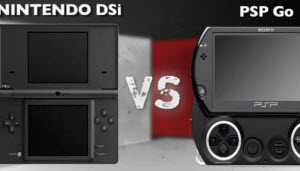 9. The Nintendo DSi defeats the Sony PSPgo
9. The Nintendo DSi defeats the Sony PSPgo
Nintendo gave the DS its third major overall in March. Each time it has done something like this, in 2004 and 2006, it has broadened the market for portable gaming machines. The success of the DSi is telling. Even as Sony launched its redesigned PlayStationPortable, the PSPgo, in October, Nintendo still held on to its gargantuan lead over Sony. About 1.7 million DS and DSi units were sold in November, compared to just 293,000 PSPgo units. The battle is far from over, but Sony hasn’t seen the kind of pop in sales from its relaunch as Nintendo did. But lest Nintendo get overconfident, the DSi still has to fend offer the iPhone and all of the other smartphones, each of them with app stores that have lots of free games. [photo credit: CNET]
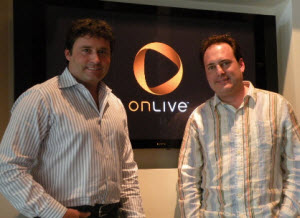 10. OnLive raises prospect of server-based games
10. OnLive raises prospect of server-based games
OnLive shook up the game industry in March when it said it planned to launch server-based gaming this fall. The idea of doing server-based games makes perfect sense. Instead of computing the game and its graphics on a PC or console, the processing takes place in a data center with a bunch of servers. With OnLive, only a video of the game action is sent to the user, who doesn’t notice that the game processing is taking place far away. With this kind of business, OnLive can offer high-end games that can be played on low-end computers or very cheap consoles on any display. It can distribute games digitally, cutting retailers out of the picture. It’s easy to keep games updated, and consumers don’t have to buy hardware so much anymore. The historical problem has been the broadband network has never been reliable enough to accommodate the fast screen changes necessary in games. And that’s a no-no. Service disruptions can’t happen in server-based games or they’re unplayable. OnLive says it has these problems solved and has begun its beta test. The company signed up lots of game publishers and it raised money from AT&T and Lauder Partners this year. Now it has to execute on the plan. But whether it succeeds or not, somebody is likely to hit it big with server-based games. Among the others trying are Gaikai and Otoy. They don’t need to kill retail altogether; they just need to create a viable and profitable digital distribution channel.
VentureBeat's mission is to be a digital town square for technical decision-makers to gain knowledge about transformative enterprise technology and transact. Learn More
